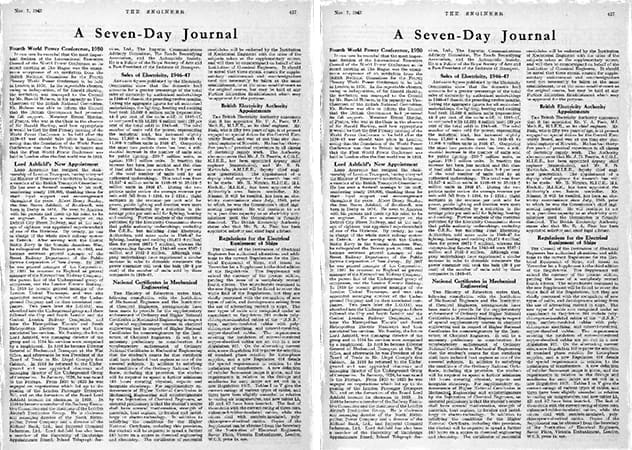November 1947: How The Engineer reported on the world’s largest post-war liner, RMS Caronia
Engineer readers who link a thriving manufacturing sector to a healthy economy might be surprised to find an advocate of this view in the upper echelons of the Royal Family.
That was the case in 1947 when Princess Elizabeth visited the Clydebank yard of John Brown and Co, Ltd to name the Caronia, a new Cunard-White Star liner that was, at the time, the world’s largest post war passenger liner.
With the UK still in the grip of post-war austerity, Princess Elizabeth used the occasion to acknowledge the great skill that had gone into designing and building the ship, adding that the same ingenuity would bring the UK out of the economic doldrums.
Our reporter noted that the Caronia was the second ship of the same name to be built by John Brown for Cunard ownership, the first 20,000-ton ship being launched in 1904 from the same building berth at Clydebank.

Cunard’s history of transatlantic services goes back to 1847, and during the luncheon that followed the launch much was made of the association between the shipping company, the shipbuilders and owners of Clydebank shipyard.
Register now to continue reading
Thanks for visiting The Engineer. You’ve now reached your monthly limit of premium content. Register for free to unlock unlimited access to all of our premium content, as well as the latest technology news, industry opinion and special reports.
Benefits of registering
-
In-depth insights and coverage of key emerging trends
-
Unrestricted access to special reports throughout the year
-
Daily technology news delivered straight to your inbox










National Gas receives funding to develop Gravitricity underground hydrogen storage system
There can't possibly ever be a '<i>business</i>' case for the <i><b>bulk</b></i> storage of hydrogen, since Green hydrogen electrolysis...